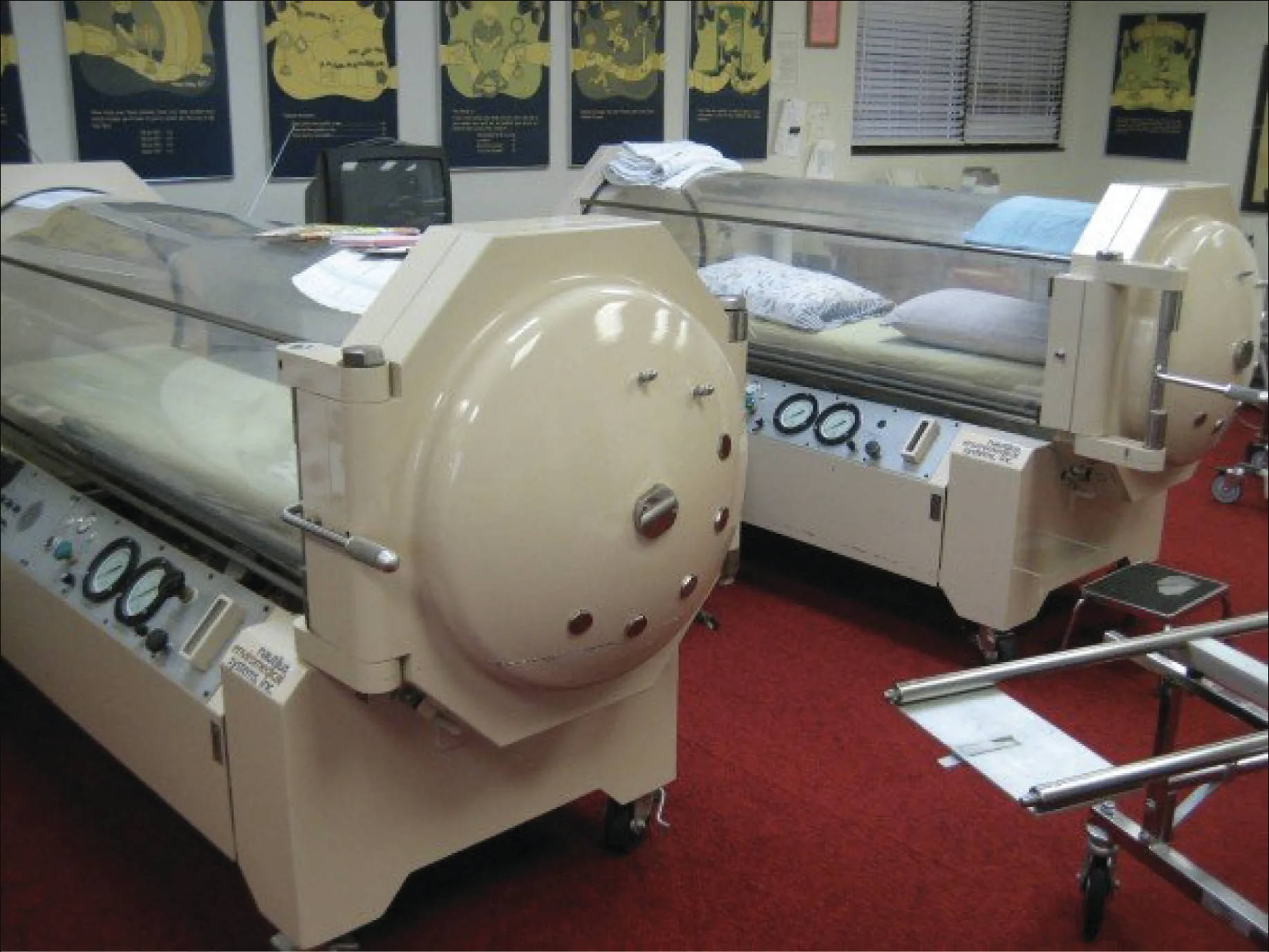Explore the therapeutic applications of hyperbaric chambers as a vital medical tool for delivering hyperbaric oxygen therapy (HBOT). This article provides a comprehensive overview of how these specialized environments are used to treat a range of conditions by increasing oxygen delivery to the body’s tissues.

Unlocking Healing Potential: The Science Behind Hyperbaric Chambers
Hyperbaric oxygen therapy (HBOT) involves breathing pure oxygen in a pressurized room or chamber, typically at pressures two to three times higher than normal atmospheric pressure. The core principle behind HBOT is to dramatically increase the amount of oxygen dissolved in the blood plasma, allowing it to reach areas of the body where normal oxygen delivery might be compromised. This enhanced oxygenation can stimulate healing, reduce inflammation, and fight infection.
The image provided depicts an external view of hyperbaric chambers, which are specialized medical devices designed to create a controlled, high-pressure environment. These chambers are crucial for administering HBOT safely and effectively, allowing medical professionals to precisely manage the treatment parameters for each patient. While the chambers may appear intimidating, they are engineered with patient comfort and safety as top priorities.
Hyperbaric oxygen therapy is utilized for a diverse range of conditions, including:
- Decompression sickness
- Non-healing wounds (e.g., diabetic foot ulcers)
- Carbon monoxide poisoning
- Severe infections
The therapeutic benefits stem from the physiological effects of increased oxygen partial pressure on tissues.
How Hyperbaric Oxygen Therapy Works
Under normal atmospheric pressure, oxygen is primarily transported by hemoglobin in red blood cells. However, in a hyperbaric environment, the increased pressure forces a significantly higher amount of oxygen to dissolve directly into the blood plasma. This dissolved oxygen can then more easily permeate tissues, including those with compromised blood flow, such as in chronic wounds or ischemic areas.
The elevated oxygen levels facilitate several beneficial physiological processes:
- Promotes Angiogenesis: Stimulates the formation of new blood vessels, improving blood supply to damaged tissues.
- Enhances Wound Healing: Provides the necessary oxygen for fibroblasts to produce collagen and for epithelial cells to proliferate, accelerating tissue repair.
- Fights Infection: High oxygen concentrations are toxic to certain anaerobic bacteria and can enhance the effectiveness of antibiotics. It also boosts the activity of white blood cells, improving the body’s immune response.
- Reduces Swelling and Inflammation: Hyperoxia can induce vasoconstriction, which helps to reduce edema and inflammation in injured tissues without causing hypoxia.
- Detoxification: Particularly effective in cases like carbon monoxide poisoning, where oxygen competitively displaces carbon monoxide from hemoglobin, rapidly reversing its toxic effects.
Conditions Treated with Hyperbaric Oxygen Therapy
Hyperbaric oxygen therapy is approved for treating a variety of medical conditions. One of its most well-known applications is in the treatment of decompression sickness (the bends), a hazard for divers where rapid ascent causes nitrogen bubbles to form in the blood and tissues. HBOT helps to dissolve these nitrogen bubbles, alleviating symptoms and preventing severe tissue damage.
Another significant application is in the management of chronic, non-healing wounds, particularly diabetic foot ulcers, radiation injuries, and compromised skin grafts. For diabetic foot ulcers, HBOT improves oxygen delivery to ischemic tissue, promotes granulation tissue formation, and enhances the body’s ability to fight infection, often preventing amputations. In cases of carbon monoxide poisoning, HBOT is a critical intervention. Carbon monoxide binds to hemoglobin with a much higher affinity than oxygen, effectively suffocating the body’s cells. HBOT rapidly displaces the carbon monoxide, restoring oxygen transport and mitigating severe neurological damage. Other conditions treated include severe anemia, crush injuries, necrotizing soft tissue infections, and osteomyelitis (bone infection).
Conclusion
Hyperbaric oxygen therapy, administered within specialized hyperbaric chambers, represents a powerful therapeutic modality with a growing range of applications. By leveraging the principles of increased atmospheric pressure to enhance oxygen delivery, HBOT offers a unique approach to promoting healing, combating infection, and mitigating tissue damage in various challenging medical conditions. As research continues to uncover its full potential, hyperbaric medicine stands as a testament to innovative approaches in patient care, promising improved outcomes for those with conditions resistant to conventional treatments.

